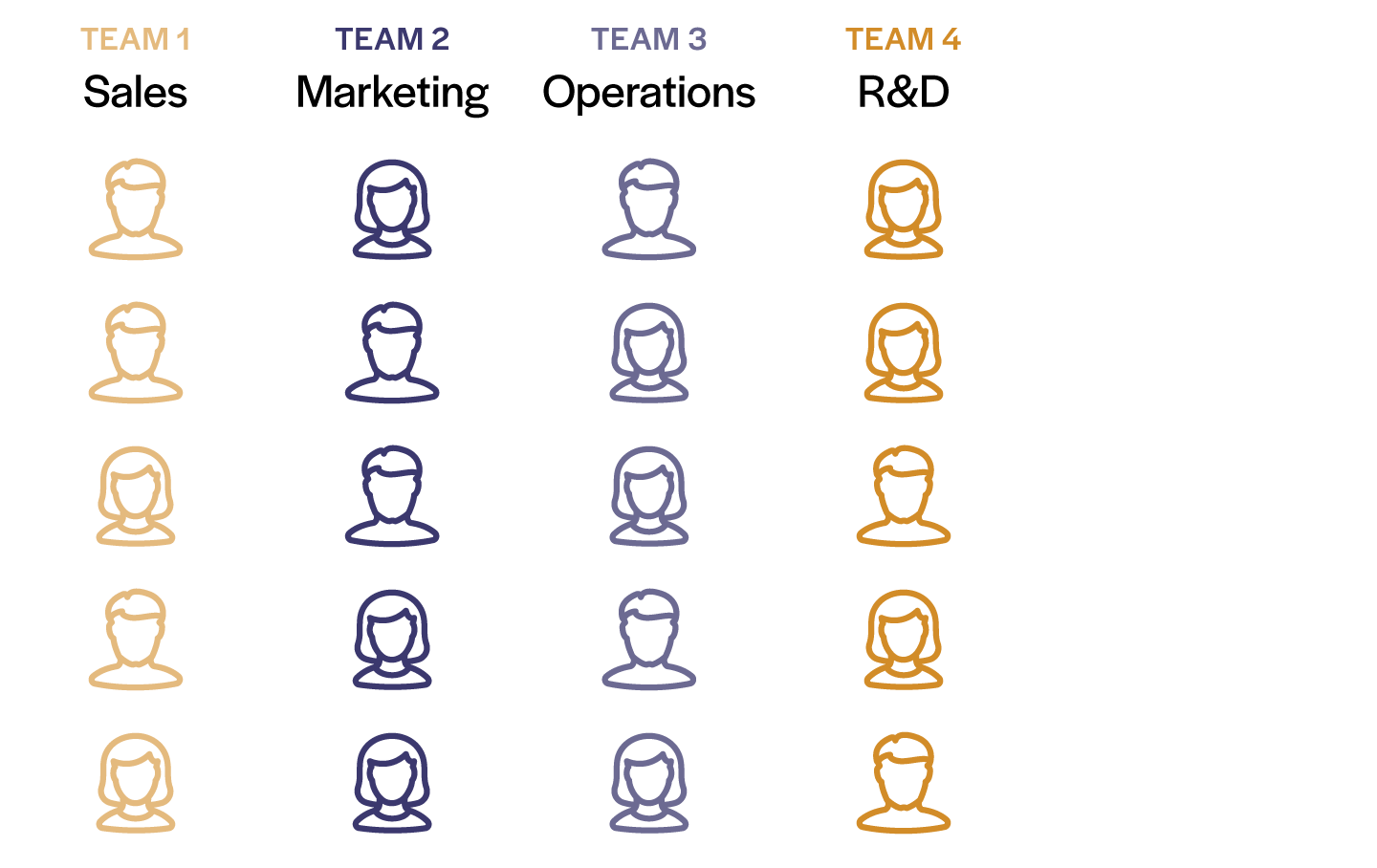At its absolute core, business is a process of reconciling competing agendas.
People need stuff; organisations sell stuff. People want to spend less money; organisations want more money spent. Team A needs stuff done; Team B needs other stuff done. Business success means, respectively, finding product-market fit, determining price, and making things happen. Organisations are little more than the product of all the agendas they have reconciled and continue to reconcile.
Adding an agenda — be it a team, product, customer group or project — adds a disproportionate amount of organisational load. The effort it then takes to keep things humming at the same rate increases exponentially. In a business context that increasingly demands customer-centricity, organisations are challenged to behave more swiftly than their scale really allows.
This is not an argument against scale, but a recommendation to focus on team structures that reduce the number of agendas operating at any one time. This unlocks speed without reducing size. One of the best ways to achieve this is shifting from disciplinary-centric silos to outcome-centric hit squads. The latter nearly always trumps the former.
A hit-squad is a small, interdisciplinary team that has all the skills needed to get the job done. That job should be laser-focused with end-to-end responsibility — maybe validating and bringing a single product to market. The goal is to invert how team members think of their roles, with all members sharing the same agenda, and collectively having the capability to capture the opportunity. Done right, this means a reduction in organisational load for the same, or greater, output.
“The goal is to invert how team members think of their roles, with all members sharing the same agenda, and collectively having the capability to capture the opportunity.”
From:
“I am on the [marketing/sales/operations/R&D] team, doing some work on this [product/project]” 
To:
“I am on the [product/project] team, bringing a [marketing/sales/operations/R&D] skillset.”
The benefits of structuring teams this way are significant:
- Simplified decision making because representatives from all necessary capability areas are in the team!
- Comradery and empathy between capability areas. At my last role in enterprise sales, I worked closely with a member of the development team for close to a month. Processes in both teams changed, as each team learned exactly what the other needed — and didn’t need — to succeed. Complex proofs of concept, a key selling tool for us, nearly halved in production time and necessary rework.
- Greater customer empathy throughout the organisation — traditionally non-customer-facing roles “feel” market pain-points directly, rather than through metrics and Chinese whispers.
- Accountability: because team member responsibilities are tied to project outcomes, not the processes of their disciplinary area. Product success is the performance indicator, not advertising budget efficiency.
- Organisational flexibility: Market-oriented hit squads can pivot fast as they learn more about what they need to do. This is entirely consistent with high-level objectives; if the organisation strategy is to go after high-margin pockets of value, a nimble hit squad is ideal for sniffing those pockets of value out.
- Managers are relieved of administrative tasks such as allocating staff and mapping out projects. They can spend time on activities that enhance the hit squads: coaching and removing obstacles.
The net result is higher quality decisions, faster — reducing project durations and increasing success rates. Operating at scale does not have to limit your ability to move fast.

Jing Seth
Marketing engineering and advanced analytics
